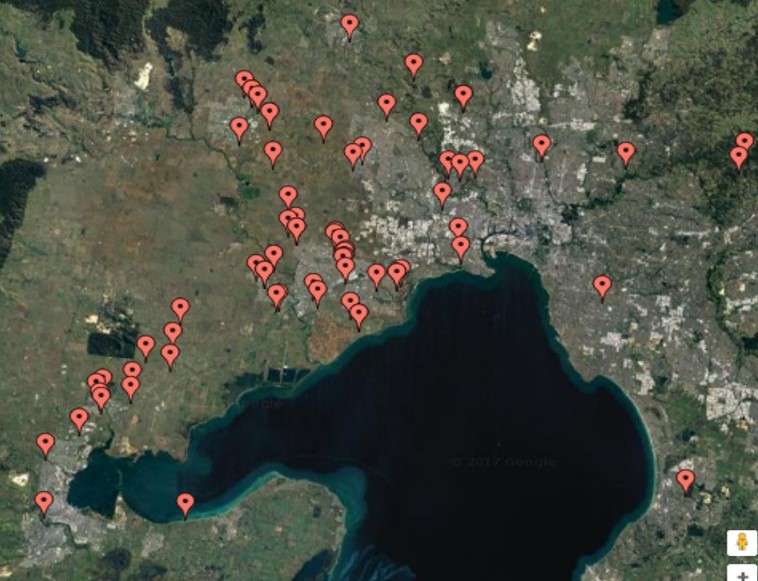Snakebite map for pets launched

As the weather warms up, veterinarians are preparing for snakebite season with an interactive map to record when and where pets are bitten. The SnakeMap Project aims to better predict, prevent, diagnose and treat snakebite in animals as well as people.
The SnakeMap Project is the first of its kind in Australia and was devised by emergency and critical care veterinarians Dr Manu Boller and Dr Kylie Kelers from the University of Melbourne's U-Vet animal hospital.
Dr Boller teamed up with UVet Animal Hospital snakebite expert Dr Kylie Kelers, along with veterinary emergency and critical care experts from across Australia, epidemiologists and human snakebite experts.
The secure, electronic research database was established to allow veterinary hospitals across Australia to enter their snakebite data. The data can then be used as a medical resource for vets and, in the future, as a snakebite forecasting system for pet owners and the public anywhere in Australia.
Data collected in the SnakeMap includes information on the bitten animal, the location and time of the snakebite—including exact coordinates of the bite if known, the treatment provided, including antivenom administration and breathing support, and the outcome of the treatment.
Dr Boller says that due to the exceedingly large number of highly venomous species in Australia, snake envenomation—is of unique significance in this country, both in human and veterinary medicine.
"Because of their inquisitive nature, dogs and cats are at particular risk of being bitten, and will succumb to the rapidly acting potent snake venom if not treated promptly. Consequently, snakebite is a common emergency presentation of dogs and cats to veterinary clinics throughout Australia," says Dr Boller.
"With SnakeMap, we now have unprecedented insight into the epidemiological dynamics where the canine and feline snake envenomation events rise in early spring, peak in the summer and recede in the fall.
"From last year's data, we can already see that most reported snakebites in dogs (73%) occurred in their backyards. We knew that dogs are occasionally bitten in 'their backyard', but did not expect the extent with which this is happening. Cats on the other hand are less predictable about the location of the snakebite as they roam more and snakebites are rarely witnessed."
Dr Kelers says SnakeMap gives an indication of which breeds of dog are most likely to be bitten.
"In the current data set, one out of four snake envenomed dogs was a Staffordshire Bull Terrier, and one out of 10 a Jack Russell Terrier, however 38 other breeds and of course mixed-breed dogs were affected also," Dr Kelers says.
"The SnakeMap may also highlight, in not previously seen detail, the relationship between the location of a snake bite occurrence and snake habitat, and, in the long term, how this relationship is influenced by human behaviour and settlement.
During the inaugural 2016/2017 season, the SnakeMap Project received data from 14 veterinary hospitals in Victoria, Queensland, Western Australia and New South Wales. For a more comprehensive map, the project encourages veterinary hospitals across the country to join in.
"The SnakeMap project is a not-for profit, volunteer-based initiative, and we would like to look at it as a veterinary community run initiative, where veterinary hospitals across the country, small and large, are joining in to contribute to new knowledge about a condition that is so unique to Australia and affects so many pets, pet owners and veterinary professionals," Dr Kelers says.
Data collected is available to SnakeMap Consortium vets for data analysis for specific research projects with the results being made accessible to the veterinary community via scientific publications.
Provided by University of Melbourne



















